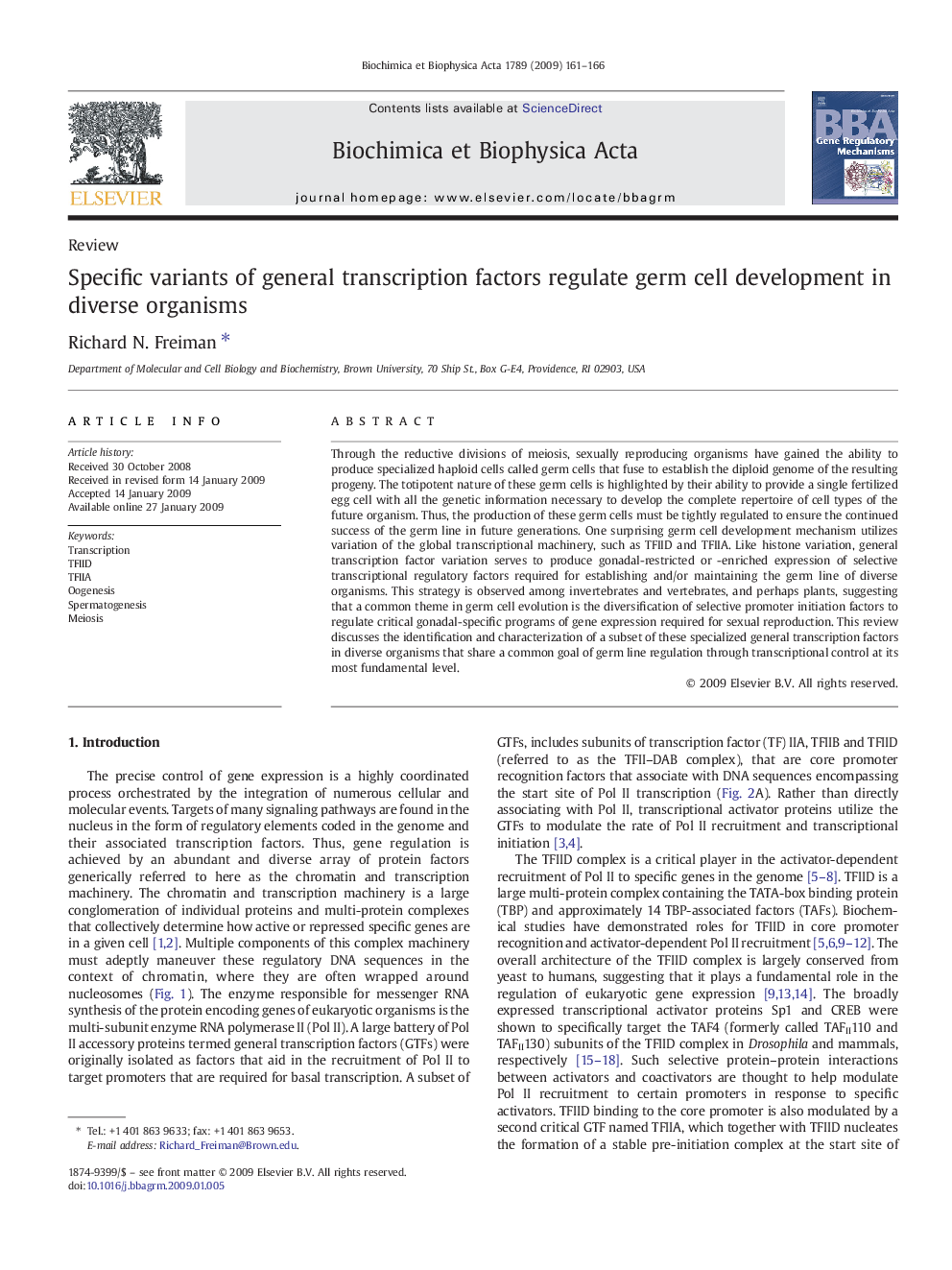| Article ID | Journal | Published Year | Pages | File Type |
|---|---|---|---|---|
| 1946883 | Biochimica et Biophysica Acta (BBA) - Gene Regulatory Mechanisms | 2009 | 6 Pages |
Through the reductive divisions of meiosis, sexually reproducing organisms have gained the ability to produce specialized haploid cells called germ cells that fuse to establish the diploid genome of the resulting progeny. The totipotent nature of these germ cells is highlighted by their ability to provide a single fertilized egg cell with all the genetic information necessary to develop the complete repertoire of cell types of the future organism. Thus, the production of these germ cells must be tightly regulated to ensure the continued success of the germ line in future generations. One surprising germ cell development mechanism utilizes variation of the global transcriptional machinery, such as TFIID and TFIIA. Like histone variation, general transcription factor variation serves to produce gonadal-restricted or -enriched expression of selective transcriptional regulatory factors required for establishing and/or maintaining the germ line of diverse organisms. This strategy is observed among invertebrates and vertebrates, and perhaps plants, suggesting that a common theme in germ cell evolution is the diversification of selective promoter initiation factors to regulate critical gonadal-specific programs of gene expression required for sexual reproduction. This review discusses the identification and characterization of a subset of these specialized general transcription factors in diverse organisms that share a common goal of germ line regulation through transcriptional control at its most fundamental level.
